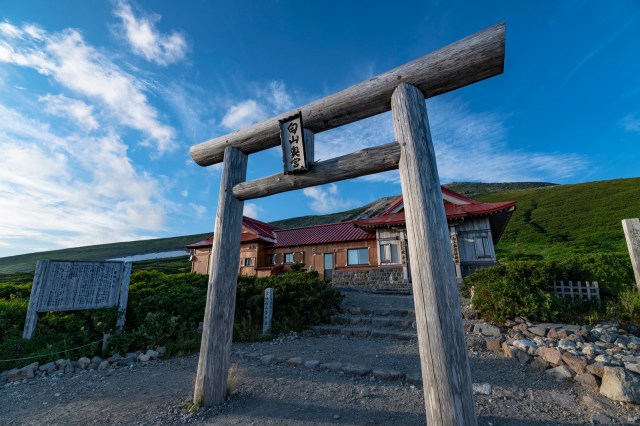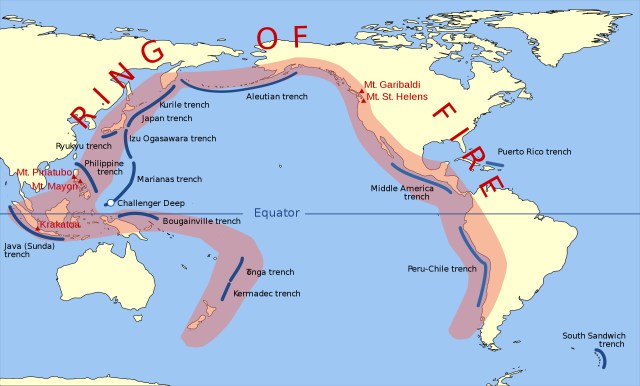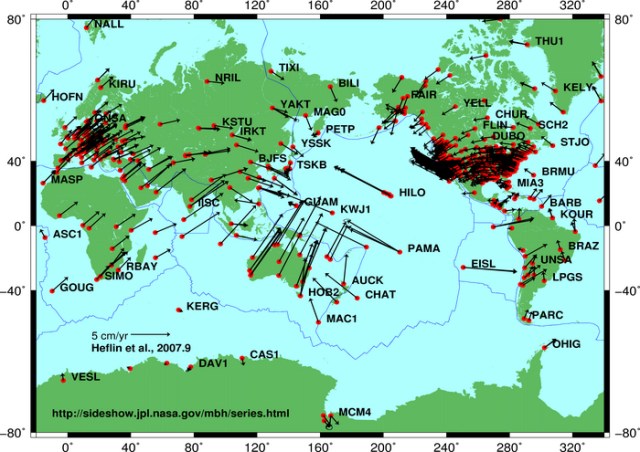
People are checking their emergency bags in fear that a big quake will arrive in the coming days.
Last month, on 13 February, Japan was rocked by a 7.1 magnitude earthquake that struck off the coast of Fukushima Prefecture, approximately 220 kilometres (135 miles) north of Tokyo.
While the tremor took some people by surprise, others weren’t shocked by it–in fact, they’d even been expecting it. Because just three days earlier, there’d been a sizeable shake in the South Pacific, southeast of New Caledonia’s Loyalty Islands.
▼ The 7.9 magnitude earthquake occurred at 10:20 p.m. on 10 February.
【海外地震】
— ウェザーニュース (@wni_jp) February 10, 2021
日本時間の2月10日(水)22時20分頃、海外で規模の大きな地震がありました。震源地は南太平洋(ローヤリティー諸島南東方)で、地震の規模はM7.9と推定されます。
この地震では津波発生の可能性があります。https://t.co/sgVSJeCs0S pic.twitter.com/18mlQDkYyv
Geological activity in the South Pacific tends to set off alarm bells for a lot of people in Japan, ever since the Great East Japan Earthquake struck on 11 March 2011, approximately two weeks after the 2011 Christchurch Earthquake devastated New Zealand’s South Island city on 22 February.
So when a series of large earthquakes occurred off the coast of New Zealand on 4 and 5 March, it set people in Japan on edge.
【海外地震】
— ウェザーニュース (@wni_jp) March 4, 2021
日本時間の3月4日(木)22時27分頃、海外で規模の大きな地震がありました。震源地はニュージーランド付近(ニュージーランド北島東方)で、地震の規模はM7.3と推定されます。PTWCによると、津波発生の可能性があります。詳細は気象庁からの発表をお待ちください。https://t.co/NugHEKUDnl pic.twitter.com/9WrgzlsSiG
Several quakes followed the initial 7.3-magnitude tremor, with the strongest measuring 8.1 in magnitude.
【海外地震】
— ウェザーニュース (@wni_jp) March 4, 2021
日本時間の3月5日(金)2時41分頃、海外で規模の大きな地震がありました。震源地は南太平洋(ケルマデック諸島)で、地震の規模はM7.5と推定されます。PTWCによると、津波発生の可能性があります。日本へ影響は調査中です。気象庁からの発表をお待ちください。https://t.co/ib5KlBGz7k pic.twitter.com/PiPD07HQKC
<更新>日本への影響は調査中
— ウェザーニュース (@wni_jp) March 4, 2021
4時59分 気象庁発表
太平洋の広域に津波発生の可能性があります。
日本への津波の有無については現在調査中です。https://t.co/H731qstBdq
Could these earthquakes be a precursor for yet another big earthquake in Japan? According to science, it’s possible.
Both Japan and New Zealand sit on the edge of the Pacific Plate in The Ring of Fire, a 40,000-kilometre (25,000-mile) long belt along which most of the world’s earthquakes occur.
As the Ring of Fire isn’t a single geological structure, earthquakes are said to occur independently of each other in the region. However, researchers say a big earthquake in one area is capable of causing other large quakes, not just nearby, but on other sides of the Earth.
Japan is particularly vulnerable to large earthquakes as it sits above four tectonic plates–the Pacific, Eurasian, North American and Philippine Sea plates all meet beneath the country, where they constantly push and grind against each other. When a buildup of stress is released on one stretch of a plate in the form of an earthquake, it’s possible for it to create a tipping point at another location, and triggering can occur.
▼ This image shows the direction of motion of the Pacific Plate Plate as it moves northwest at a speed of 7-11 centimetres (3-4 inches) a year.
That certainly doesn’t bode well for Japan, where a lot of people are going on past experience and now preparing for a quake, saying:
“When an earthquake hits New Zealand, it tends to come to Japan as well so please be careful, everyone.”
“For some reason, if an earthquake of magnitude 6-7 or more occurs elsewhere on the Pacific plate, Japan feels it within a week.”
“Time to keep the gasoline tank full.”
“I’m buying water and checking my emergency bag today.”
“There were three earthquakes greater than magnitude 7 in one day!?? This may be seriously dangerous…”
“This is the same pattern seen at the time of the Great East Japan Earthquake.”
In just a few days, remembrance ceremonies will be held in Japan to mark ten years since the Great East Japan Earthquake, which makes these recent quakes in the South Pacific even more unnerving.
While we’re yet to find out whether the tremors will have any effect on Japan, now is a good a time as any to update the emergency bag with up-to-date essential supplies.
Sources: Live Science, Science Daily, Jin
Featured image: Pakutaso
Insert images: Wikipedia/NASA, Wikipedia/Gringer
● Want to hear about SoraNews24’s latest articles as soon as they’re published? Follow us on Facebook and Twitter!



 Strong earthquake hits Japan as anniversary of Fukushima disaster approaches【Photos, Videos】
Strong earthquake hits Japan as anniversary of Fukushima disaster approaches【Photos, Videos】 Japanese scientist predicts another major earthquake in Japan by 2017
Japanese scientist predicts another major earthquake in Japan by 2017 How was last week’s earthquake judged to be an aftershock of the 2011 Tohoku disaster?
How was last week’s earthquake judged to be an aftershock of the 2011 Tohoku disaster? Pattern of quakes from New Zealand to Japan stokes fears of another major disaster
Pattern of quakes from New Zealand to Japan stokes fears of another major disaster Following powerful earthquake in northern Japan, all Hokkaido payphones are now free to use
Following powerful earthquake in northern Japan, all Hokkaido payphones are now free to use Village Vanguard’s most expensive Black Lucky Bag sets an ominous tone for 2026
Village Vanguard’s most expensive Black Lucky Bag sets an ominous tone for 2026 Pizza Hut Japan’s hot lucky bags are perfect for a New Year’s pizza party
Pizza Hut Japan’s hot lucky bags are perfect for a New Year’s pizza party Cute Anime Girls Driving Sales of Windows 8 in Japan
Cute Anime Girls Driving Sales of Windows 8 in Japan Japanese beef bowl chain Sukiya’s 2026 Smile Box lucky bag basically pays for itself
Japanese beef bowl chain Sukiya’s 2026 Smile Box lucky bag basically pays for itself Large amount of supposed human organs left in Osaka marketplace
Large amount of supposed human organs left in Osaka marketplace Book of over 200 Hayao Miyazaki Totoro pre-production illustrations, some never published, now on sale
Book of over 200 Hayao Miyazaki Totoro pre-production illustrations, some never published, now on sale One-of-a-kind Osaka-themed Uniqlo Shinsaibashi opens
One-of-a-kind Osaka-themed Uniqlo Shinsaibashi opens Japanese office snack service begins offering vegan and gluten-free options
Japanese office snack service begins offering vegan and gluten-free options We encountered the most frightening fried chicken in Ameyokocho in Tokyo, and ate it anyway
We encountered the most frightening fried chicken in Ameyokocho in Tokyo, and ate it anyway Cup Noodle tries an authentic Jiro-style ramen, but something’s not quite right
Cup Noodle tries an authentic Jiro-style ramen, but something’s not quite right Starbucks Japan ready to get Year of the Horse started with adorable drinkware and plushies【Pics】
Starbucks Japan ready to get Year of the Horse started with adorable drinkware and plushies【Pics】 Hayao Miyazaki says Happy New Year to Studio Ghibli fans with new art for Year of the Horse
Hayao Miyazaki says Happy New Year to Studio Ghibli fans with new art for Year of the Horse 7 great places to see Mt. Fuji from without having to climb it
7 great places to see Mt. Fuji from without having to climb it We found possibly the quietest Japanese-style hotel in Tokyo’s bustling Shinjuku district
We found possibly the quietest Japanese-style hotel in Tokyo’s bustling Shinjuku district Hello Kitty Choco Egg figures are an adorable trip through three periods of Japanese pop culture【Pics】
Hello Kitty Choco Egg figures are an adorable trip through three periods of Japanese pop culture【Pics】 Japan’s oldest largetooth sawfish in captivity back on display in Mie Prefecture
Japan’s oldest largetooth sawfish in captivity back on display in Mie Prefecture Cyberpunk anime meets traditional culture in Ghost in the Shell gold leaf Japanese changing screens
Cyberpunk anime meets traditional culture in Ghost in the Shell gold leaf Japanese changing screens The best Starbucks Japan Frappuccinos we want to drink again in 2026
The best Starbucks Japan Frappuccinos we want to drink again in 2026 We revisited Sweets Paradise after a decade to see if Japan’s dessert buffet still delivers
We revisited Sweets Paradise after a decade to see if Japan’s dessert buffet still delivers 7-Eleven Japan starts new temporary luggage storage service in over 300 branches
7-Eleven Japan starts new temporary luggage storage service in over 300 branches Disillusionment at Tsukiji’s tourist-target prices led us to a great ramen restaurant in Tokyo
Disillusionment at Tsukiji’s tourist-target prices led us to a great ramen restaurant in Tokyo Starbucks teams up with 166-year-old Kyoto doll maker for Year of the Horse decorations【Photos】
Starbucks teams up with 166-year-old Kyoto doll maker for Year of the Horse decorations【Photos】 Tokyo considering law requiring more trash cans following litter increase in heavily touristed area
Tokyo considering law requiring more trash cans following litter increase in heavily touristed area Tokyo’s Tsukiji sushi neighborhood asks tour groups to stay away for the rest of the month
Tokyo’s Tsukiji sushi neighborhood asks tour groups to stay away for the rest of the month Tokyo event lets you travel back in time, for free, to celebrate 100 years since Showa era start
Tokyo event lets you travel back in time, for free, to celebrate 100 years since Showa era start Sanrio theme park in Japan announces plans to expand into a Sanrio resort
Sanrio theme park in Japan announces plans to expand into a Sanrio resort Japan may add Japanese language proficiency, lifestyle classes to permanent foreign resident requirements
Japan may add Japanese language proficiency, lifestyle classes to permanent foreign resident requirements Stamina-destroying “Paralysis Noodles” are Tokyo’s newest over-the-top ramen innovation
Stamina-destroying “Paralysis Noodles” are Tokyo’s newest over-the-top ramen innovation Survey asks foreign tourists what bothered them in Japan, more than half gave same answer
Survey asks foreign tourists what bothered them in Japan, more than half gave same answer Japan’s human washing machines will go on sale to general public, demos to be held in Tokyo
Japan’s human washing machines will go on sale to general public, demos to be held in Tokyo Japan’s deadliest food claims more victims, but why do people keep eating it for New Year’s?
Japan’s deadliest food claims more victims, but why do people keep eating it for New Year’s? We deeply regret going into this tunnel on our walk in the mountains of Japan
We deeply regret going into this tunnel on our walk in the mountains of Japan Studio Ghibli releases Kodama forest spirits from Princess Mononoke to light up your home
Studio Ghibli releases Kodama forest spirits from Princess Mononoke to light up your home Major Japanese hotel chain says reservations via overseas booking sites may not be valid
Major Japanese hotel chain says reservations via overseas booking sites may not be valid Put sesame oil in your coffee? Japanese maker says it’s the best way to start your day【Taste test】
Put sesame oil in your coffee? Japanese maker says it’s the best way to start your day【Taste test】 No more using real katana for tourism activities, Japan’s National Police Agency says
No more using real katana for tourism activities, Japan’s National Police Agency says Starbucks Japan reveals new sakura drinkware collection, inspired by evening cherry blossoms
Starbucks Japan reveals new sakura drinkware collection, inspired by evening cherry blossoms Updated cherry blossom forecast shows extra-long sakura season for Japan this year
Updated cherry blossom forecast shows extra-long sakura season for Japan this year Osaka earthquake: Scenes show damage from strongest tremor to hit the region in decades
Osaka earthquake: Scenes show damage from strongest tremor to hit the region in decades Women speak out about sexual violence after Great East Japan Earthquake
Women speak out about sexual violence after Great East Japan Earthquake Russian Scientist Predicts “Massive Earthquake” to Hit Japan by End of 2014
Russian Scientist Predicts “Massive Earthquake” to Hit Japan by End of 2014 We visit a tsunami-ravaged region almost a decade after the Great East Japan Earthquake
We visit a tsunami-ravaged region almost a decade after the Great East Japan Earthquake Great East Japan Earthquake memorial service broadcast in Shinjuku after years-long absence
Great East Japan Earthquake memorial service broadcast in Shinjuku after years-long absence M5.6 earthquake in Tokyo brings some weird photos to Twitter
M5.6 earthquake in Tokyo brings some weird photos to Twitter Great East Japan Earthquake: Commemorate eight years and donate with a search on Yahoo! Japan
Great East Japan Earthquake: Commemorate eight years and donate with a search on Yahoo! Japan Earthquake strikes Kanto region, ruins novelty goods store’s evening
Earthquake strikes Kanto region, ruins novelty goods store’s evening All of Japan instantly alerted to earthquake that kind of happened but not really
All of Japan instantly alerted to earthquake that kind of happened but not really Huge cracks in Tohoku Expressway caused by earthquake fixed the same afternoon
Huge cracks in Tohoku Expressway caused by earthquake fixed the same afternoon Five years on, Google Maps updates images of areas affected by 2011 earthquake and tsunami
Five years on, Google Maps updates images of areas affected by 2011 earthquake and tsunami M6.3 earthquake hits Japan, anime fans rush to tweet photos of damage to figure collections
M6.3 earthquake hits Japan, anime fans rush to tweet photos of damage to figure collections Minor earthquake brings laughter, bikini girl to Japan
Minor earthquake brings laughter, bikini girl to Japan Town destroyed by 2011 earthquake and tsunami creates anime based on stories of residents
Town destroyed by 2011 earthquake and tsunami creates anime based on stories of residents
Leave a Reply